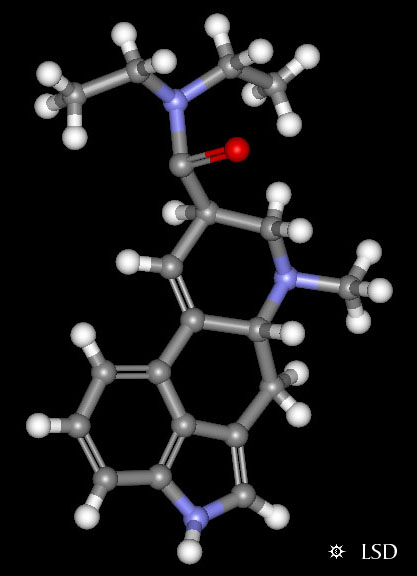Navigate

LSD Side Effects
 LSD side effects are unpredictable. They depend on the amount taken, the user's personality, user’s mood, user’s expectations, and the surroundings in which the drug is used. LSD (d-lysergic acid diethylamide), commonly called "acid," was discovered in 1938 and is the most powerful known hallucinogen. LSD radically changes a person's mental state by distorting the perception of reality to the point where, at high doses, hallucinations occur.
LSD side effects are unpredictable. They depend on the amount taken, the user's personality, user’s mood, user’s expectations, and the surroundings in which the drug is used. LSD (d-lysergic acid diethylamide), commonly called "acid," was discovered in 1938 and is the most powerful known hallucinogen. LSD radically changes a person's mental state by distorting the perception of reality to the point where, at high doses, hallucinations occur.
Although it is derived from a fungus that grows on rye and other grains, LSD is semi-synthetic. It is chemically manufactured in illicit laboratories, except for a small amount which is produced legally for research. Typically, the user feels the first effects of the drug 30 to 90 minutes after taking it. Physical LSD side effects include dilated pupils, higher body temperature, increased heart rate and blood pressure, sweating, loss of appetite, sleeplessness, dry mouth, and tremors.
LSD side effects often involve a change in the user’s perception of sensations and feelings more a change in their physical appearance. The user may feel several different emotions at once or swing rapidly from one emotion to another. If taken in a large enough doses, the drug produces delusions and visual hallucinations. The user's sense of time and self changes dramatically. Sensations may seem to "cross over," giving the user the feeling of hearing colors and seeing sounds. These LSD side effects can be frightening and can cause panic.
Users refer to their experience with LSD as a "trip" and to acute adverse reactions as a "bad trip." These experiences are long - typically they begin to clear after about 12 hours. Some LSD users experience severe and terrifying LSD side effects such as thoughts and feelings of fear of losing control, fear of insanity and death, and despair while using LSD. Some fatal accidents have occurred during states of LSD intoxication.
Many users experience LSD side effects known as flashbacks. Flash backs are the recurrence of certain aspects of a person's experience, without the user having taken the drug again. A flashback occurs suddenly, often without warning, and may occur within a few days or more than a year after LSD use. Flashbacks usually occur in people who use hallucinogens chronically or have an underlying personality problem; however, otherwise healthy people who use LSD occasionally may also have flashbacks. Bad trips and flashbacks are only part of the risks of LSD side effects. LSD users may manifest relatively long-lasting psychoses, such as schizophrenia or severe depression. It is difficult to determine the extent and mechanism of the LSD involvement in these illnesses.
LSD side effects cause dramatic changes in perception, thought, and mood. These may include:
- vivid, usually visual, "pseudo-hallucinations" that the user is aware are not real
- distorted perceptions of: time (minutes seem like hours); distance (hazardous if operating motor vehicles or standing near balcony edges); gravity (sensations of floating or being pressed down); the space between oneself and one's environment (for some, a feeling of oneness with the universe, for others, a feeling of terror)
- fusion of the senses (music is "seen," colors "heard")
- diminished control over thought processes, resulting in recent or long-forgotten memories resurfacing and blending with current experience, or in insignificant thought or objects taking on deep meaning
